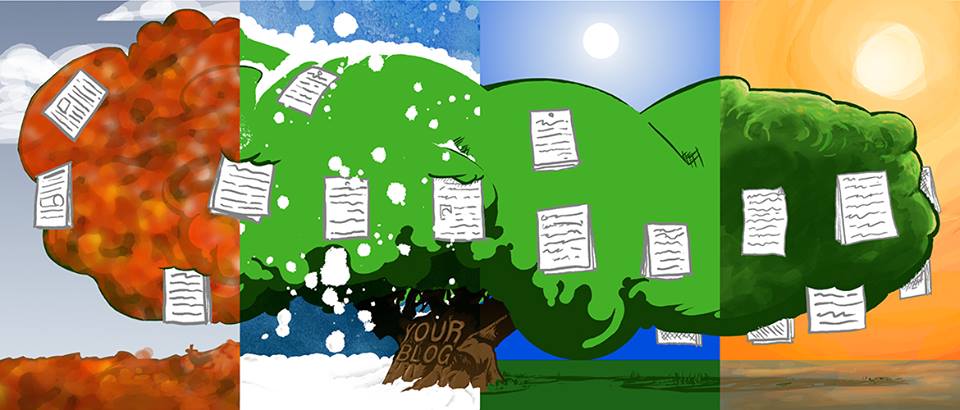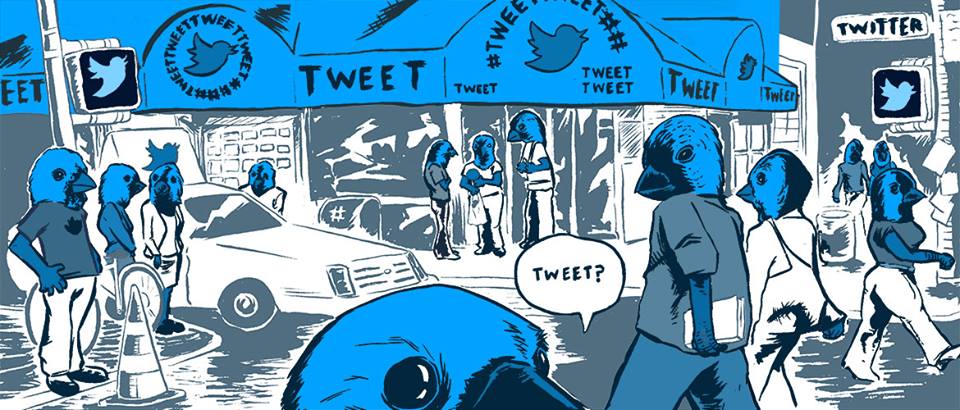Illustrated by Patrick Yurick
There’s nothing I hate more than wasted content.
And if you’re publishing blog posts once and never refreshing or re-promoting them, then you’re wasting content. You’re wasting money, too!
We manage several blogs for our clients. Several of those blogs have thousands of blog posts. For our larger clients, like magazine publishers, the majority of content was written before we met. For the startups we work with, most were written by us.
Legacy magazine publishers have never had a problem creating new content. But that doesn’t mean they know what to do with all of the old stuff. And what to do with the old stuff is my favorite part.
That’s why, when managing blogs for our clients, we make room for 10%-20% recycling. With new clients, we might not start this process for six- to 12 months. For our publishing clients who have lots to work with, we start right away.
The life cycle of most articles looks something like this:
- Publish blog post.
- Promote blog post.
- Followers, fans, and email subscribers promote blog post.
- SEO-searchers promote blog post.
- Blog post never sees the light of day again.
End cycle.
Ideally, your best blog posts should be recycled in a way that looks more like this:
- Publish blog post.
- Promote blog post.
- Followers, fans, and email subscribers promote blog post.
- SEO-searchers promote blog post.
- Edit blog post (six months later).
- Re-promote blog post.
- Followers, fans, and email subscribers promote blog post.
- SEO-searchers promote blog post.
- Continue cycle.
At the very least, schedule your Tweets for 12 months out, so that your blog posts get re-promoted via social media automatically whether you refresh them or not.
Here’s an example of how you might recycle a blog post effectively.
Instead of writing a new version of a “12 Best Holiday Cookies” post every year, why not use the same post and add to it instead? Next year, it can be “24 Best Holiday Cookies.” The next year it can be “36 Best Holiday Cookies.”
In terms of SEO, this is great, because you’ll direct all of your promotional attention to this one article instead of trying to rank three different “Best Holiday Cookies” blog posts. This post will be your SEO champion, and all you have to do is update it every year. All of the inbound links you get via social media and other blogs will continue to accumulate.
You can do the same with other popular posts that are evergreen (meaning that they don’t go out of style).
How we find great evergreen posts worth recycling:
- Look at your website analytics (Google Analytics, for example) and find out your top 10 traffic-driving posts (organic traffic). In order to keep those posts on top of Google, keep them updated and re-promote them regularly, as with our process above.
- Look at the pages that drive the most organic traffic, have the lowest bounce rate, the most comments, an average visit duration of more than 2 minutes, and other positive behaviors. Pick your top 10 in each category and add those to your list for recycling.
“Most companies do such a great job of figuring out how they acquired blog visitors via keywords, but rarely do companies take the time to figure out what those visitors did once they got there,” says Patrick Hughes, our Director of Data. “If you’re using your blog to generate leads like our clients do, the content should be analyzed constantly to figure out what works. Identify your best content and continue to improve it. Re-promote it regularly to make sure it stays your top found content.”
“Good management is the art of making problems so interesting and their solutions so constructive that everyone wants to get to work and deal with them.”
― Paul Hawken
Originally published in 2013.











